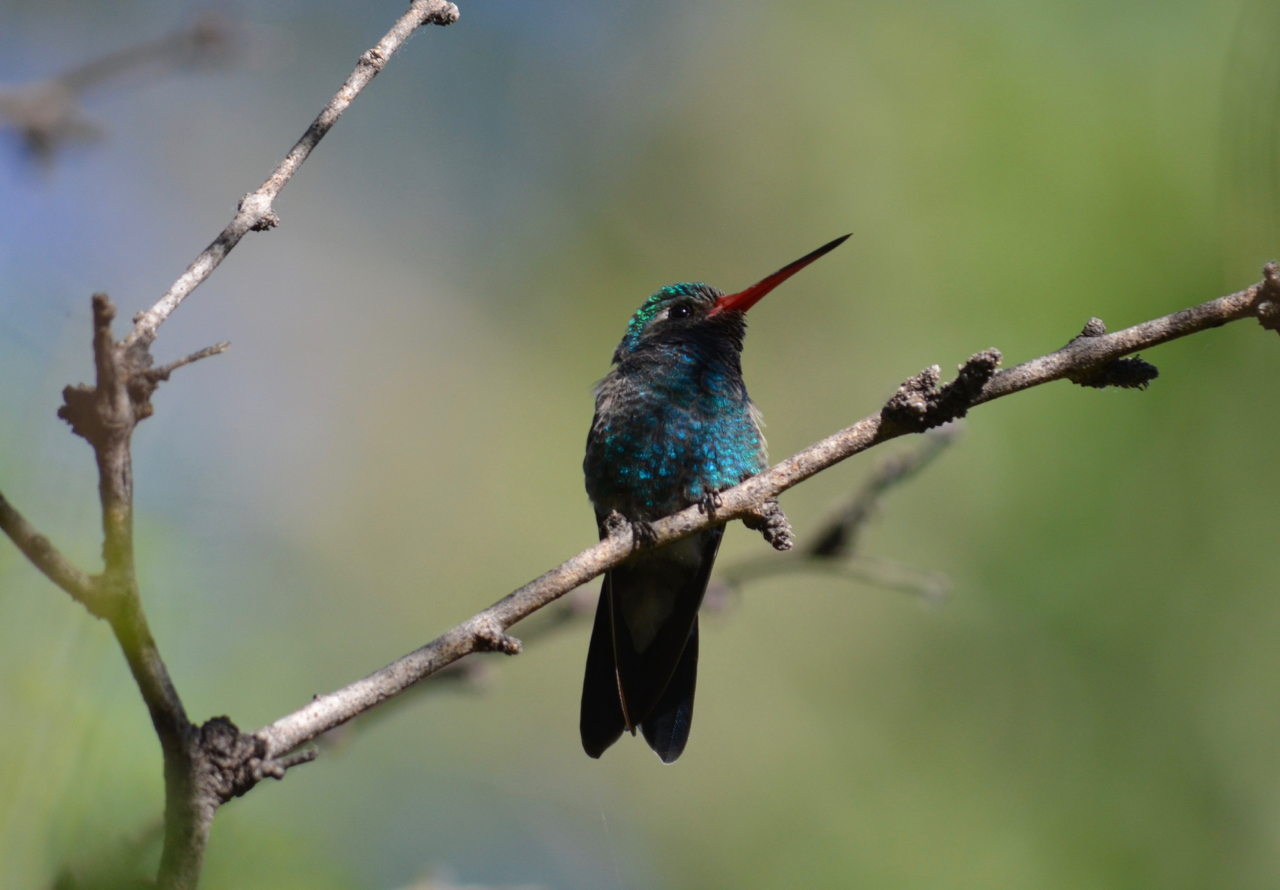

We may earn revenue from the products available on this page and participate in affiliate programs. Learn more ›
Hummingbirds are oddballs in the bird world. They’re the tiniest birds around, have to hoover-up half their body weight in bugs and nectar daily to survive, can fly backwards, and they’re basically tiny flying jewels. Hummingbirds boast some of the most dazzling colors in the animal kingdom.
“Something that’s really striking in a museum collection [of hummingbirds] is that you can pull out a drawer and all the throats, or gorgets, flash,” says Chad Eliason, an evolutionary biologist at the Field Museum of Natural History in Chicago who studies hummingbirds. “[At] the right angle there’s this maybe 5 to 10 degree window where you just get this really bright flash of color, you get the light just right.”
To better understand how hummingbirds achieve this eye-popping iridescence, Eliason and his colleagues examined microscopic, light-reflecting structures called melanosomes in their feathers. The researchers found that hummingbirds’ melanosomes are far more intricate than those of other birds. The team reported these findings today in the journal Evolution.
Hummingbirds aren’t the only birds that are iridescent, meaning that when light strikes their feathers it is scattered to create a lustrous glint that changes depending on the viewing angle. This effect is very similar to the sheen you see on oil films, mother of pearl, and soap bubbles. You can find iridescence in the subtle gloss seen in starlings, the unmistakable green heads of male mallard ducks, and the psychedelic displays created by tropical birds-of-paradise. But compared with hummingbirds, they are just not as good, according to Eliason.
In birds, melanosomes, which are little packets of melanin pigment surrounded by keratin protein create this iridescence effect. They’re found in tiny filaments called barbules, which branch off of the main barbs that line the shaft of a feather, similarly to leaves sprouting from the branches of a tree. Humans have melanin and keratin in our hair, skin, and nails, but (sadly) they can’t create such fabulous colors.
“We have kind of the same basic ingredients as birds do, but birds have just gone wild with layering and structuring those materials in different ways to play with light in unique ways,” Eliason says.
Hummingbirds take this idea to the extreme. Researchers had previously seen that hummingbird melanosomes are different than those of other birds, but most studies had focused on only one or two species, Eliason says. He and his team examined barbules from 34 different hummingbird species (including the colorfully named violet sabrewing and white-tailed starfrontlet) under a transmission electron microscope to find out whether hummingbirds all produce their shimmering iridescence the same way. They saw that, unlike the log-shaped melanin granules found in other animals, the melanosomes in hummingbird barbules are flattened into a pancake shape and are filled with tiny air bubbles. These pockets create plenty of complex surfaces for light to bounce off of as it travels through keratin, pigment, and air.
Amongst different hummingbird species, traits such as the thickness of the melanosomes, size of the air bubbles, and how many melanosomes were stacked on top of each other in the barbules varied. “In some species you might have 15 layers of these air-filled pancakes,” Eliason says.
He and his colleagues also examined how these color traits evolved over time by consulting an existing database that describes how closely related different hummingbird species are to each other and how long ago they shared a common ancestor. They found that in hummingbird barbules, the keratin outer layer has evolved independently from the melanosomes underneath. By contrast, in dabbling ducks (a group with iridescent wings that includes mallards), these structures have evolved in tandem, Eliason says.
This suggests that hummingbirds have had more freedom to evolve and fine-tune different combinations of color traits. This might explain the wide array of colors—or “explosive color diversification,” as Eliason and his coauthors describe it—seen in different hummingbird species.
As a next step, the team has begun to investigate what happens to these colors when different hummingbird species breed.
“There’s this one case where you have two pink-throated species and when they breed the offspring is a bright yellow color, which is totally unexpected,” Eliason says. “We’re studying now what different combinations [of color traits] are allowing hybrids to look so weird compared to their parental species.”
